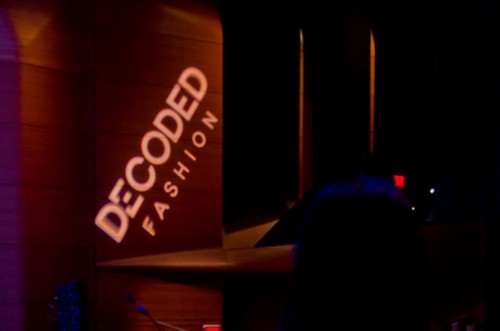[ Photo by: Decoded Fashion. Written by: Lili Balfour of Atelier Advisors ]
I heard an interesting statistic at the Decoded Fashion event in NYC last month — 95% of high fashion purchases are done in brick and mortar stores. This bit of knowledge may lead brands to believe that they should shutter online stores and focus on a brick and mortar only strategy. Think again.
Betsey Johnson built her first brick and mortar store in 1978 and expanded her empire by approximately two stores per year. Currently, she is closing 95% of her stores. Oddly, despite a 20% decrease in store sales and a 50% increase in wholesale sales, the company was planning to grow stores from 63 to 100 in the near future. Not surprisingly, the question most brands are asking is: what percentage of distribution should be devoted to traditional brick and mortar stores?
Bricks or Clicks?
Well known e-tailers are realizing the power of the physical store. Bonobos recently announced their launch into Nordstroms. Warby Parker credited their move into physical space for not only an increase in sales, but an increase in consumer insight and employee knowledge. After Gap acquired e-tailer Athleta and built physical stores, Tony Lenk, President of Gap’s E-commerce business, stated; “For every dollar that customers in the region spent over the Web, they shelled out an additional $4 in the store.” It is no surprise, consumers purchase more when they can touch and feel the merchandise. Clicks need bricks.
Balancing Act
As with any business decision, your bricks vs clicks ratio is derived from a blend of analytics and customer feedback. The question you want to answer is: where are consumers finding you? Strong brands, such as Bonobos, Warby Parker and Athleta, have the advantage of experimenting with brick and mortar by utilizing partnerships, pop up shops and acquisitions. Lesser known brands will have to be careful when they enter physical space on their own. A store build out can range from $100k to $500k, and comes with annual expenses that are difficult to unravel. A conservative ‘brick approach’ is one store per year, measured regularly against the metrics of other distribution channels.
Some brands do well in the digital world, while other brands require a high touch experience. I highly doubt Lululemon could have built a multibillion dollar wellness brand online. The lure of the store is the community you interact with while shopping, wine tasting, exercising and socializing. Camaraderie is a powerful selling tool.
Can Luxury Go Virtual?
E-tailer Amazon recently announced that they will be entering the luxury market. Their 2006 acquisition of Shopbop gave them a glimpse into the luxury market, while keeping both sites separate. Of course, the consumer is comfortable buying a $30 pair of shoes on Zappos as the price point is low. But Shopbop has proven that the consumer would also be comfortable buying a $10,000 Zac Posen dress online. As with the brands mentioned above Zac Posen already has a strong following. This is not the case for most brands, luxury or otherwise, that sell online.
Statistically speaking, the conversion rate for in store sales is 67%, while the conversion rate for online sales is a mere 10%. More importantly, online returns range from 15%-50% of sales and 60% of those returns are due to fit. That is a lot of money wasted on shipping and reduced value as apparel goes out of season.
Yes, Amazon’s experiment is ambitious, but 2012 is armed with selling tools that didn’t exist in 2006.
My Digital Doppelgänger
Decoded Fashion included a stellar panel on digital customization. The panel included Acustom,Clothes Horse, Me-ality, and Styku — all focused on helping consumers get the perfect fit. One company missing was Fitiquette, a 3-D avatar-as-model approach created by Cisco alums Andy Pandharikar and Anant Kumar. I believe the digital doppelgänger could be the solution to the pain found in billions lost due to low conversion rates and high returns.
What do you think? Have you used technology to perfect your shopping experience?
LILI BALFOUR is the founder of Atelier Advisors.
- Join SFFAMA, Follow SFFAMA, Like SFFAMA.
- For media relations & PR/Publicity Contact Owen Geronimo



